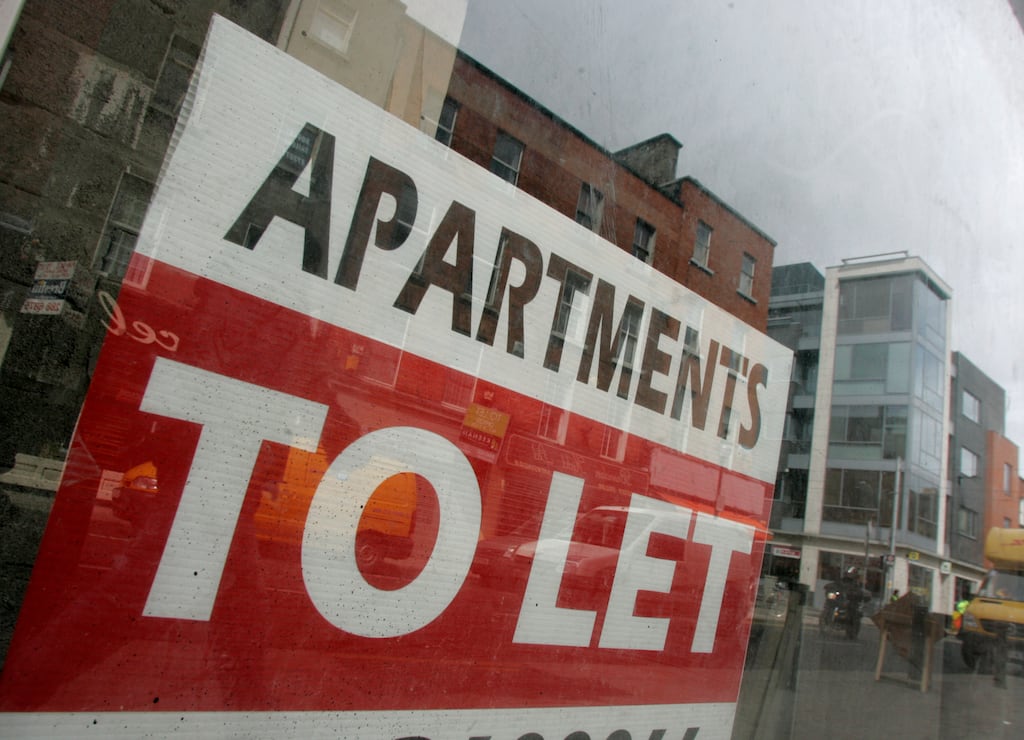Rent increases are likely to accelerate as the supply of new homes that aided a recent easing dries up, hitting workers on average wages, according to a report by property website Daft.ie.
Private home rents rose by 0.6 per cent on average in the first three months of 2024, the lowest rate in more than three years. However, Daft warns that the supply of new homes that helped slow the recent increases is drying up once again, indicating that rents will increase at a faster rate this year.
According to the report, more than 125 purpose-built rental developments opened since 2016, adding about 10,000 new rental homes. On October 1st last, there were almost 1,500 homes available to rent in Dublin compared to just 800 on the same date a year previously.
Since then, the availability of rental homes in Dublin has fallen, rather than risen – although “at least some of that is seasonal”. There were just over 1,200 homes available to rent in Dublin on May 1st, up only 4 per cent year-on-year.
READ MORE
Ronan Lyons, associate professor in economics at Trinity College Dublin and the author of the report, noted that a recent boost to the number of homes available for rent eased inflation into this year.
“Those improvements in availability now look to have finished, at least for now,” he says. “This suggests that further pressure on open-market rents this year is likely to be upward, rather than downwards.”
Mr Lyons said the building of new rental homes in Dublin had slowed inflation considerably over the past 18 months.
“More supply, even at the upper end of the market, relieves pressure across the market and, in the second half of 2023 in particular, new supply saw availability improve and inflation has eased,” he adds.
But he noted that as this has stalled, pressure is likely to be upward “further straining affordability for those on regular incomes”.
Mr Lyons argues that policymakers who want to increase the supply of homes for rent over the rest of the decade must develop a “thorough understanding” of rental dynamics.
Daft’s report shows that the average rent in Dublin, where demand is highest, hit €2,395 a month in the three months to the end of March, up 2.5 per cent on the same period in 2023.
The cost of renting a home in Cork over the same timescale rose 8 per cent to €1,870 a month.
Limerick rents rose 17.5 per cent to €1,933, in Galway they grew 5 per cent to €1,861, Waterford rents climbed almost 7 per cent to €1,495, while they added 6.8 per cent in the rest of the Republic to €1,467.
Nationally, rent inflation slipped from a 14 per cent high two years ago. Daft says that Dublin was mostly responsible for the falls in average rents although the rate of increase eased in regions also.
There were 2,000 homes available to rent on May 1st, according to the agent. That was unchanged on a year previously and fewer than half the 2015 to 2019 average of almost 4,400, the report said.
- Sign up for Business push alerts and have the best news, analysis and comment delivered directly to your phone
- Join The Irish Times on WhatsApp and stay up to date
- Our Inside Business podcast is published weekly – Find the latest episode here
















